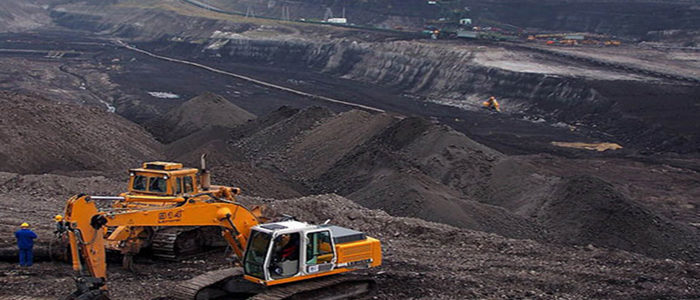
Pakistan’s Thar desert contains one of the largest untapped coal deposits in the world.
The size of lignite coal reserves in the Thar Desert was estimated at 175 billion tons in 1992 and is spread across 9,100 sq km
The Thar coalfield is located in the Thar Desert, Tharparkar District of Sindh. The deposits were discovered in 1991, by the Geological Survey of Pakistan (GSP) and the United States Agency for International Development.
Pakistan is currently facing a serious energy crisis: the energy shortfall exceeds 6,000 MW. The rapid increase in energy demand from growing demographic pressures and intense industrialization has contributed to the crisis. Coal plays a minor role in Pakistan’s energy mix, despite Thar Desert being one of the largest undeveloped coal reserves in the world. Pakistan’s annual demand for coal exceeds supply; therefore, Pakistan relies upon imported coal to fulfill its requirements, particularly for industrial uses. The overall objective of developing Thar’s coal deposit is to generate electric power from in-country coal resources, to reduce the country’s dependency on imported coal, and to contribute towards bridging the gap between electricity supply and demand.
Sindh Engro Coal Mining Company (SECMC) is a joint venture corporation between the Government of Sindh and Engro founded in 2009 tasked to mine and establish power projects from Block II of the Thar coalified. The government of Sindh owns 51 percent of the company.
Sindh Engro Coal Mining Company (SECMC) has undertaken the execution of mining operations for coal extraction in the Thar coalfield, Block II, as a means of tackling energy deficiency across Pakistan. The area has exploitable lignite coal reserves of 1.57 billion tons. SECMC has made several investments for this project, which includes the acquisition of land for the resettlement of communities, mining facilities and services, and power plants. SECMC will execute the project in three phases. The first phase of the Project is underway, in which, two 330 MW subcritical plants will be established with the majority share of Engro Powergen. The total mining capacity of the project is due to be 20.6 MT/annum and its power generation capacity is projected to be 3,960 MW.
Tharparkar, the largest desert terrain in Pakistan — is home to a population of 1.5 million. The district is ranked the lowest amongst provincial socioeconomic indicators.
SECMC’s involvement and interaction with its local community during its mining, land acquisition and resettlement-related activities will increase as it will work to benefit its people by building and developing sustainable and independent livelihoods, providing education and health care, housing, improved water, and sanitation conditions, whilst empowering men and women with employment and other benefits.
In 2013, A Memorandum of Understanding (MoU) was signed between Sindh Engro Coal Mining Company Ltd (SECMC, a joint venture between the Government of Sindh and Engro Powergen — a subsidiary of Engro Corporation Limited), China Power International Holding Ltd (CPIH), and Sino Sindh Resources (Pvt) Ltd (SSR) to develop 6000 MW of Thar coal based power plants in Sindh.
CPIH is a wholly-owned core enterprise of China Power Investment Corporation, one of five State Power Corporations in the People’s Republic of China. The principal business of CPIH is to develop, construct, own, operate and manage large power plants. Currently, the company is managing power plants with a generation capacity of more than 23,000 MW. SSR and SECMC are the developers of Thar Coal Mining Blocks-I and Block-II, respectively.
It is to be noted that Thar coalfields contain the world’s 7th largest coal reserves — estimated at 175 Billion Tons, capable to produce 100,000 MW for the next 200 years. Thar lignite is indigenous, abundantly available, and ideally suited to produce electricity giving it a distinct advantage over imported coal. Thar coal also has the advantage of economies of scale, which will result in a progressively lower coal price and predictable electricity price as the mining operation scales up and more power plants are added. Most importantly, utilization of Thar coal for power generation will result in huge foreign exchange savings versus any other imported energy resource
The overall objective of developing Thar’s coal deposit is to generate electric power from in-country coal resources, to reduce the country’s dependency on imported coal
Pakistan generates 37 percent of its electricity using oil which is the most expensive source of power generation, while there is negligible reliance on its available coal reserves.
Thar, with 175 billion tons of coal, is home to the 7th largest coal reserves in the world and is foreseeable as the only viable and sustainable solution to the country’s energy shortfall.
The abundance of these reserves can be equated in energy terms to the combined oil reserves of Iran and Saudi Arabia and are capable of producing 100,000 MW of electricity for the next 200 years.
Moreover, SECMC has planted around 30,000 trees and 4 Reverse Osmosis (RO) water purifiers to provide drinking water to the local community. The 660 MW project is scheduled to be completed by June 2019, however, keeping in view, the fast pace of work on the site, it is expected that the project will start producing electricity by early 2019. Now we are hopeful to get the energy in 2019 but why we have passed more than 25 years to get a result, whereas Geological Survey of Pakistan (GSP) discovered this coal in 1991.
The whole of Pakistan is now waiting for energy produced by our own country, when we will get relief from load shedding and hopefully economical electricity for everyone. The people of Thar will also benefit by getting employment opportunities, better living standard, education and health care.
The writer is a retired doctor of the Sindh Health Department
Published in Daily Times, November 21st 2018.







